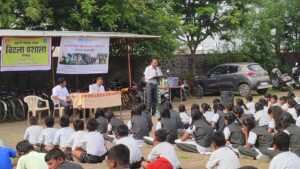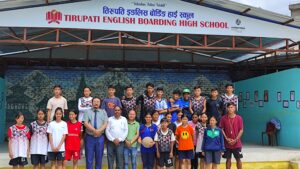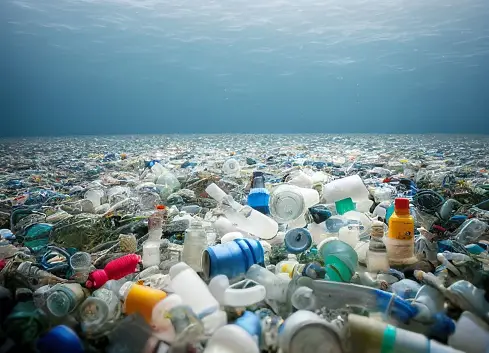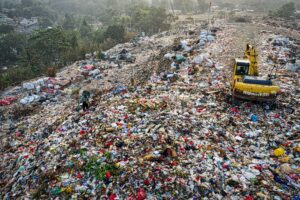The United Nations Department of Economic and Social Affairs (ECOSOC) has recently approved and selected the World Environment Council (WEC) as a key stakeholder in advancing the Sustainable Development Goals (SDGs) outlined in the 2030 Agenda for Sustainable Development.
Indians can take pride in the inspiring efforts of Professor Ganesh Channa, hailing from Solapur, Maharashtra. As the Founder and President of the World Environment Council, Prof. Channa has devoted the past five years to spearheading critical initiatives focused on environmental protection, tree plantation, and tackling the pressing challenges of climate change.

This agenda is a comprehensive plan for advancing people, the planet, and prosperity, while strengthening global peace and freedom. It recognizes the urgent need to eradicate poverty in all forms and dimensions, and emphasizes the critical importance of collaborative partnership among all countries and stakeholders. It aims to liberate humanity from poverty and environmental degradation, and to steer the world towards a sustainable and resilient future. The 17 Sustainable Development Goals such as –
- No poverty
- Zero Hunger
- Good health
- Quality Education
- Gender equality
- Clean water and Sanitation
- Affordable and Clean Energy
- Decent work and Economic Growth
- Industry, Innovation Infrastructure
- Reduced Inequalities
- Sustainable Cities and Communities
- Responsible Consumption and Production
- Climate Action
- Life below Water
- Life on land
- Peace Justice and Strong Institutions
- Partnerships for the goals

And 169 targets outlined in this Agenda reflect its vast scope and universal aspirations, with a commitment to leaving no one behind. They wish to leverage the necessary resources to implement the agenda through a renewed global partnership for sustainable development, based on strong solidarity and focused on the needs of the most vulnerable, with the participation of all stakeholders.
WEC strives to focus mainly on the 8th goal of the sustainable development i.e. “Decent work and Economic growth”. Promote sustained, inclusive and sustainable economic growth, full and productive employment and decent work for all
- To Promote development-oriented policies that support productive activities, decent job creation, entrepreneurship, creativity and innovation, and encourage the formalization and growth of micro-, small- and medium-sized enterprises, including through access to financial services
- To Improve progressively, through 2030, global resource efficiency in consumption and production and endeavour to decouple economic growth from environmental degradation, in accordance with the 10-Year Framework of Programmes on Sustainable Consumption and Production, with developed countries taking the lead
- By 2020, significantly reduce the proportion of youth not in employment, education or training
- By 2030, devise and implement policies to promote sustainable tourism that creates jobs and promotes local culture and products

WEC, through its ambitious ‘The Environment Protection Bank campaign’ aims to play a crucial role in achieving the Agenda’s objectives, which, if fulfilled, will greatly improve the lives of everyone and transform the world for the better. This campaign will provide students and teachers with opportunities to learn about the pressing environmental issues facing our world and to involve in meaningful activities that can make a great difference. Through this campaign, individuals will be cheered to reduce their carbon footprint, conserve natural resources, and promote sustainable lifestyles. In addition to raising awareness about environmental concerns, the campaign will also raise a sense of community and encourage people to work together to protect our planet.
This campaign is currently implementing programs which are designed to speed up the implementation of the Sustainable Development Goals (SDGs) in various ways, including addressing interlink ages between different goals. Like, increasing awareness and education can contribute to the achievement of multiple goals, such as SDG 4 (Quality Education), SDG 13 (Climate Action), and SDG 17 (Partnerships for the Goals), by promoting knowledge-sharing, capacity-building, and stakeholder engagement.
World Environment Council is actively involved in communicating environmental education through various activities, programmes and campaigns in schools and colleges. Educational institutions can invite the Council to provide environmental education to future generations, emphasizing the importance of protecting our planet and promoting sustainable practices. By taking action on multiple fronts, the campaign foresees to creating a more sustainable and resilient future for everyone.
How To Achieve Zero Carbon Emission
When, while the lovely valley teems with vapour around me, and the meridian sun strikes the upper surface of the impenetrable foliage of my trees, and but a few stray gleams steal into the inner sanctuary, I throw myself down among the tall grass by the trickling stream; and, as I lie close to the earth.

















